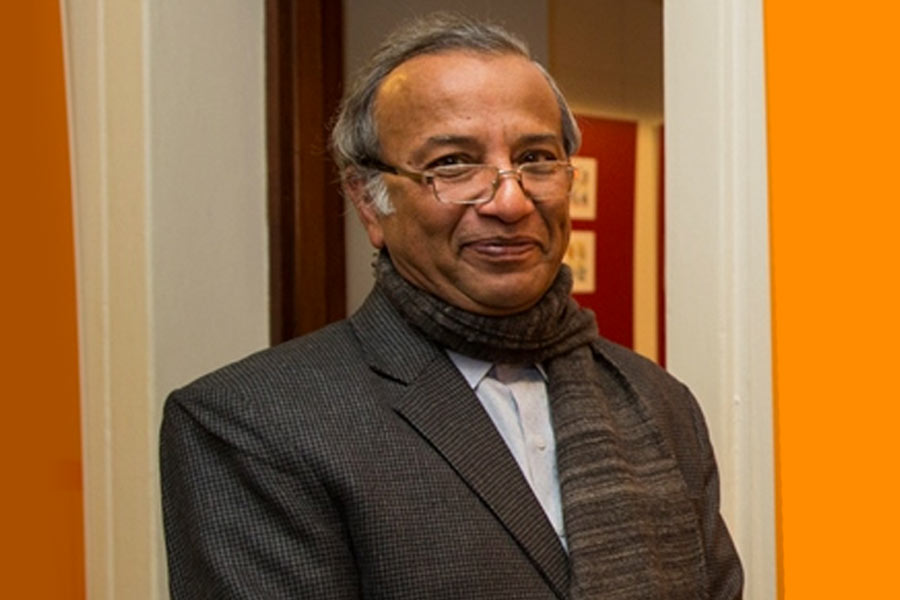Cartoonist and illustrator Ajit Ninan’s life was about setting pen, or pencil to paper. Even when he talked with colleagues he’d be constantly sketching. Says one person who worked with him for years: “He was always doodling while he chatted and at the end of the conversation he would present you with a cartoon of you or on the topic of discussion.”
It was ever thus. In college – he studied at Madras Christian College in Chennai – his friends, who were often broke, would be sure to take him along on their expeditions to see a movie or have a meal. But they’d first head to a place where an ever obliging Ajit would draw a few quick cartoons or illustrations and sell them for a small fee. The group’s finances thus restored, they would head off their outing. When he was ragged, it was a pretty gentle experience consisting of being called by one senior after another to turn out quick sketches of them.
Ninan, who did a BA and MA in political science, became one of India’s most brilliant political cartoonists. His black-and-white cartoons with splashes of colour made his drawings stand out.
Times of India cartoonist Sandeep Adhwaryu remembers Ninan’s advice when as an aspiring cartoonist he asked to meet him: “Try to find humour in everyday life. And if you can’t find it, create it.”
Unsurprisingly, his dedication to his craft left little time for socialising. At India Today, where he worked for years, he would arrive promptly at 10am, sit down at his desk, and start turning out one cartoon or illustration after another for the group’s three magazines – India Today, Bombay (a city magazine that came out in the 1980s) and Target, a childrens’ magazine.
Many people have fond memories of his character, Inspector Moochhwala, which he created for Target. Bald and tubby with a walrus mustache, the bumbling detective inspired by the Pink Panther series, the inspector was always accompanied by his sniffer dog Pooch. The detective even had a cellphone, long before they were commonplace.
When he was asked to join India Today as a staff cartoonist, “the political scenario was entertaining at the time but it was also challenging for a cartoonist,” Ninan recalled in 2015, talking about his career. Janata Party was leading the coalition, with Morarji Desai in power. I found myself taking on the exhaustive task of drawing the entire coalition in my cartoons,” he said.
Meticulous in exercising his craft, “his colleagues also knew they could count on him to observe deadlines” and “we could count on him to bale us out with a cartoon if the photos for a story did not arrive on time,” says a former India Today colleague.
He left his desk only for short spells but he was always crazy about cricket. “His desk would be where everyone congregated to hear the commentary when there was only radio. Later he would bring the latest gadget with a six-inch screen to watch the match while he worked.” He would make occasional forays away from his desk, crack a joke or two, and then return to his table where he was most at home.
Ninan liked to travel on buses where he could study faces “as the more interesting (faces) travel in buses.”
After his time at India Today where he was best known for his Centrestage series, he then moved to the Indian Express, Outlook magazine and The Times of India. He also did illustrations for several other magazines and publications. Ninan saw around 10 prime ministers come and go during his career but his favourite was said to PV Narasimha Rao for his distinctive pout.
Congress general secretary Jairam Ramesh paid an elegant tribute to Ninan, noting a compliment Nehru had once paid to the legendary Shankar who used to lampoon him mercilessly: “Without the least bit of malice or ill-will he points out with an artist’s skill the weakness and foibles of those who display themselves on the public stage,” Nehru said. Ninan was also “in that grand tradition” whose cartoons “make us smile,” Ramesh said.
Bhishwadeep Moitra, one of his colleagues at Outlook, said in a Facebook tribute that Ajit Ninan will “remain the gold standard for magazine cartooning.” The way Ninan “caricatured Rao, Sonia, Sangma etc. left all of us in splits. One of my favourites was Ajit's drawing of Jaswant Singh riding a camel — he drew both Jaswant and the camel having the same face, both flaring up their nostrils alike,” Moitra said.
It could be said that drawing and being a cartoonist ran in the blood. He was from a prominent Syrian Christian family, and the famous cartoonist Abu Abraham was his uncle who encouraged Ninan’s cartooning ambitions.
Cartoonist and writer Ravi Shankar said that Ninan was one of India’s best illustrators and cartoonists who was “always ready with a joke, never malicious in his work.” Times of India columnist Jug Suraiya said that Ninan’s daily pocket cartoon Just Like That in The Times of India “was a bright ray of joy and pleasure lightening the daly landscape of gloom and doom.”
Suraiya said that Ninan walked a “tightrope between legitimate leg-pulling and cruel caricature “with the grace of a Houdini of humour, always impartial, never tilting into spite or malice.”
In recent years, Ajit abandoned Delhi where he had built up his career and moved to Mysore where he set up a home office. He was 68 and appears to have died after suffering a cardiac incident. He leaves his wife Elizabeth, their two daughters Samyukta and Aparajita, and two grandchildren.
It’s said that being a cartoonist is a dying art. Ajit Ninan was one of the few prominent practitioners of the last 40 years . His passing leaves a void in the world of journalism.










